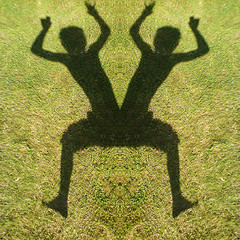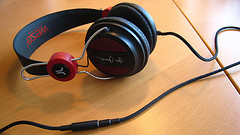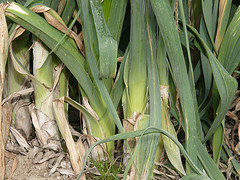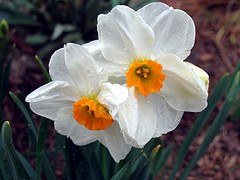1.1. One or more than one?
- The general rule to form the plural in English is add an 's' to the noun, as in Spanish:
computer-computers
However, not all plurals end in -s.
- Some add -es. For example, when the noun ends in -ch, -sh, -s, -x, or sometimes -o.
match-matches
dish-dishesbus-buses
box-boxes
potato-potatoes (there are exceptions such as radio-radios)
 |
| By Kapungo, C. Commons |
- When the noun ends in consonant + y, it is changed into 'i' and we add -es.
family-families
But careful! if it ends in vowel + y, there is no change:
guy-guys
- When the noun ends in 'f' or 'fe', it is changed into 'ves'.
shelf-shelves
life-lives
- Finally, there are irregular plurals that we will see in the next section.
1. thief - 6. tax -
2. book - 7. fly -
3. bush - 8. half-
4. baby - 9. knife-
5. day - 10. wish -
How is the plural with -s or -es pronounced in English?
There are three different ways. Do you remember the rules you learned in unit 1 (topic 3) for the pronunciation of the third person singular of verbs in the Present Simple? The rules are the same! We must know the difference between voiced sounds (when the vocal cords vibrate) and voiceless sounds (when there is no vibration).
Let's remember the rules:
- When the preceding sound is voiced, the -s or -es is pronounced /z/: table-tables.
- When the preceding sound is voiceless, it is pronounced /s/: stop-stops.
- When the preceding sound is sibilant (/s/, /z/, /ʃ/, /ʧ/ or /ʤ/), it is pronounced /Iz/: kiss-kisses, buzz-buzzes, wish-wishes, watch-watches, bridge-bridges.
Have a look at these plural nouns and place them in the appropriate place according to how they are pronounced. Use our robot if you need to know the pronunciation of the words.
friends, visits, castles, forts, places, teams, sites, changes, buses
| /s/ | /z/ |
/Iz/ |
After you have checked the pronunciation, pronounce them aloud.
 |
| By steveyb, C. Commons |
The true origins of the leek being the emblem of the Welsh is now confined to myth and legend.
One such legend associates it with St. David, the Patron Saint of Wales. A legend tells that he ordered his soldiers to wear the leek in a battle against the pagan Saxon invaders of Britain. Every year on St. David's Day, every Welsh soldier in Welsh regiment wears them in their cap badges.
The daffodil is another popular Welsh symbol, certainly more attractive and better-smelling. Although its origin as a symbol for Wales is not clear, it is curious to note that the word for 'daffodil' and for 'leek' are the same in Welsh. Coincidence?
 |
 |
| By pizzodisevo, C. Commons |
By Martin LaBar, C. Commons |